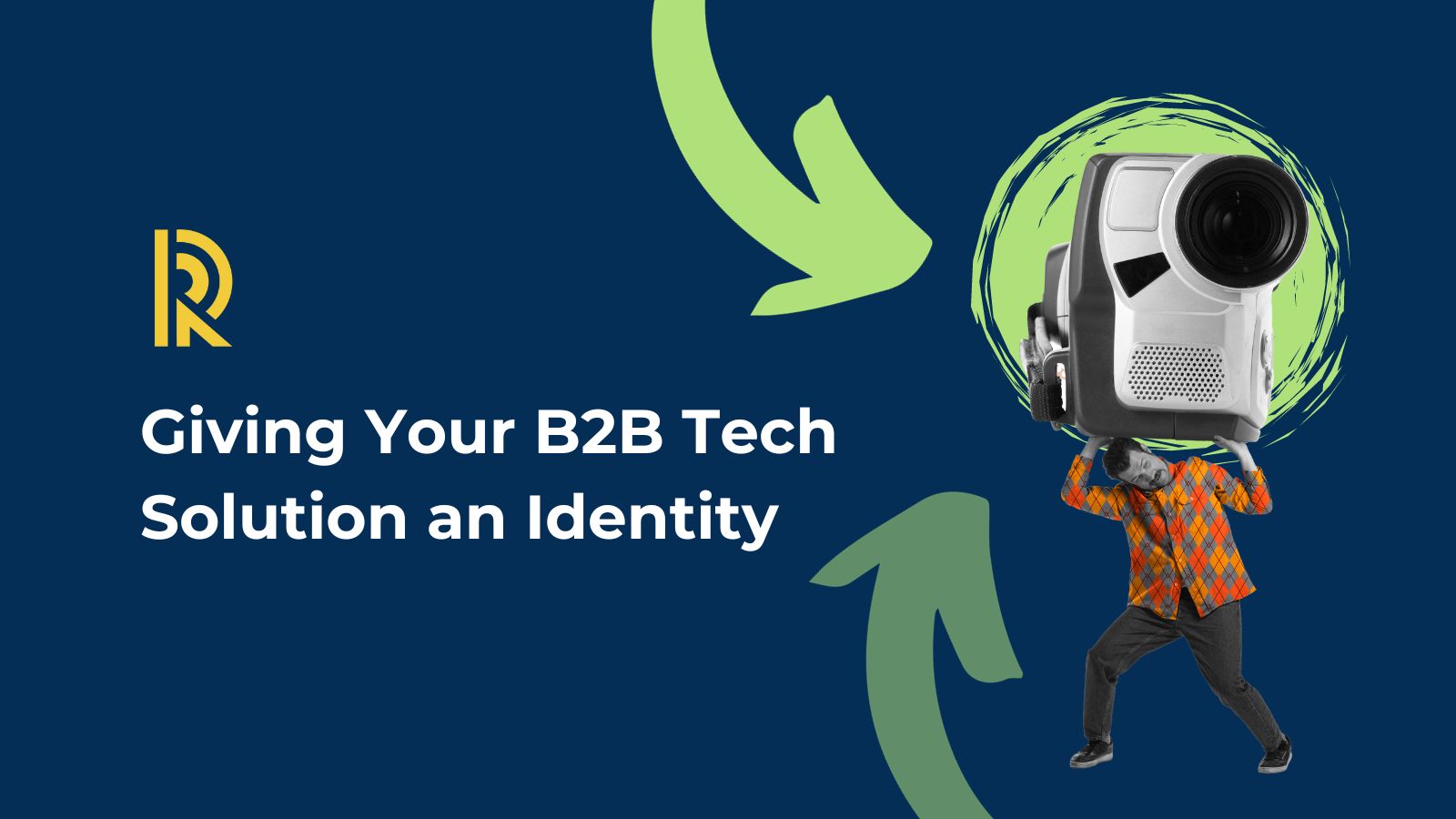
It’s high time we acknowledge the elephant in the room in the B2B tech industry: branding. It’s not just about having a fancy logo or a catchy tagline; it’s about resonating with your audience on a deeper level.
How often have you tried to explain what you do to a relative and had them wave their hands in confusion? As marketing and communications experts, it’s our job to put these complicated solutions in terms that laypeople can understand.
So, let’s dive into the labyrinth of branding challenges and opportunities that today’s CMOs face, especially while marketing complex tech solutions.
Defining Your Brand Identity
Your brand isn’t just a name; it’s an entity with a distinct personality. This is the essence of your brand identity - the unique combination of values, ethos, and character traits that make your brand stand out amidst the noise and clutter of the tech industry.
The million-dollar question, however, remains. How do you define this brand personality – and make your solution a key part of it?
Enter the three core elements of brand personality: Vision, Voice, and Value.
Vision
Your Vision sets the stage for your brand’s journey, mapping out where you’re going and how you plan to get there. It’s the compass that navigates your brand through the turbulent waters of market shifts and consumer trends.
Voice
Next comes your Voice. This is how your brand communicates with its audience, the words you choose, the tone you use, and the underlying messages you convey.
Remember, your voice isn’t just about what you say; it’s about how you say it.
Your voice is the defiant roar that echoes through the industry corridors, the authoritative statement that challenges conventions, and the innovative dialogue that sparks conversations.
Value
Finally, there’s Value. What does your brand bring to the table that others don’t? What unique benefit, service, or product does your brand offer that makes it the go-to solution for your target audience? Your value proposition is the cornerstone of your brand identity, the solid rock upon which your brand stands tall.
If we look at companies like Apple, we can see this thought process in motion. Apple has successfully positioned itself alongside excellence and quality. However, it’s also used its branding to align with its customers. Its ‘Shot on iPhone’ campaign showed audiences the quality of its cameras whilst highlighting the brand’s popularity with people. It was centred on the skills of the people using Apple products and implying that skilled photographers are using them. This boosted the brand’s perception as one centred on people and excellence.
To give your solution a unique identity, remember, it’s not about what you’ve done – it’s about what your customer gets. Sell benefits, not features. Apple didn’t sell the iPod as ‘iPod: 5GB of storage’. Steve Jobs held up the iPod and promised users 1000 songs in their pocket.
Crafting Your Unique Value Proposition
CMOs are tasked with mastering the art of creating compelling and differentiated value propositions. This is not about listing features; it’s about showcasing the unique benefits of your tech solution. The first step is to translate the complexity of your product into the language your target customers resonate with.
For example, if your solution is designed to improve productivity in the workplace, highlighting your user-friendliness within your brand messaging is a good first step. Show end-users what your product can do for them, how it will help them, and ultimately why it will be of use to them.
If your audience is busy decision-makers who don’t have time to read through beautifully crafted prose, then make sure you’re using clear and concise language that gets to the heart of what they’re looking for quickly.
The first step is understanding your customers. What are their concerns? Their priorities? The ways they want to be communicated with? From there, you can map your product and decide how best to tell its story.
Telling Your Brand Story
Storytelling can turn your B2B tech solution into a heroic problem solver that customers want to engage with. It creates an emotional connection that goes beyond features and benefits. Communicating your brand story effectively across various channels and touchpoints is the magic key here.
It’s not just telling them about your solutions. It’s taking them on a journey. It’s the history of your company, your successes, key takeaways and core messages.
What is your primary driver? Are you reinventing the status quo? Are you showing users how they can achieve their goals? Once you have this nailed down and incorporated within your branding, you can start to build your story across your assets.
Successful campaigns are consistent - anyone should be able to click on your website and know it’s your company through recognisable messaging and tone. Once you’ve created consistency, you can build trust and, from there, can showcase to any prospective clients who your company is.
People are most likely to work with people they trust - so having a good product isn’t enough. You need to be able to show prospects who you are and why they should work with you over others.
Aligning Brand Strategy with Business Goals
As you level up from branding individual solutions into giving your business’s overall perception a makeover, success will come from making your brand strategy more than just words on paper. It should align with your business goals, driving customer acquisition, retention, and growth. A powerful brand strategy serves as the guiding star that informs every decision and defines every customer interaction.
For example, if you want to grow engagement with your blog posts, making sure that each one specifically ties to a pain point of your audience is a great first step. Not only will you be providing useful insights, but you’ll be building your brand as a helpful guide to a complicated industry.
This is particularly important for those working in the B2B tech sector, where language can be confusing and potentially alienate clients. Your branding is a way to cut through the noise and show prospects the key parts of your solution without relying on jargon or obscure terminology.
Measuring and Iterating Your Brand Strategy
In the realm of branding, data is your best friend. It helps evaluate the effectiveness of your brand strategy. Use tools and metrics to measure brand perception and make informed decisions. After all, what gets measured gets managed.
Building brand perception and understanding what is and isn’t working for your audience is crucial. Brand perception audits, for example, are great ways to understand what’s working and where you need to dedicate more attention.
It’s important to remember that your strategy should be flexible and adjustable. It should be built to grow, and tracking how it’s resonating with your audience is an integral part of this journey.
Brick by Brick: Building your Brand Image
A strong brand identity is your game-changer. It differentiates you in the crowded tech market and creates meaningful connections with your audience.
So, are you ready to take the reins, prioritise your brand strategy, and propel your B2B tech solution to success?
To learn more about developing your brand identity, check out how Sam Altman shaped OpenAI’s brand image through his widely-televised testimony to Congress.



 "The intricacies of the data-driven landscape is written into the DNA of Resonance. We are built for the data economy."
"The intricacies of the data-driven landscape is written into the DNA of Resonance. We are built for the data economy.".jpeg?width=250&height=181&name=AdobeStock_565367297%20(1).jpeg)
 "In Tech PR we have a front row seat to the changing technology landscape. From Generative AI to Quantum, it's our job to insert our clients' voices into the narrative"
"In Tech PR we have a front row seat to the changing technology landscape. From Generative AI to Quantum, it's our job to insert our clients' voices into the narrative"



 "In a world where the only constant is change, how do tech brands stay one step ahead of the market? That's where Resonance comes in"
"In a world where the only constant is change, how do tech brands stay one step ahead of the market? That's where Resonance comes in".png?width=219&height=219&name=Seb%20Moss%20wavelength%20thumbnail%20(1).png)

 "Resonance is a group of technology, business and communications experts"
"Resonance is a group of technology, business and communications experts"

